If you’ve been hanging out on the Internet recently, you may have seen the viral laminar flow experiment with a balloon. YouTube or TikTok recently (go follow STEAMsational if you haven’t yet!). In the laminar flow experiment, water appears to freeze when it’s coming out of a balloon. The secret to this magic trick is, as almost always, science. We love doing this activity as part of our no prep STEM challenges!
Read on to learn how to do your own viral laminar flow experiment.

What is a Laminar Flow?
There are two ways that water typically flows through a hole or opening. In fluid dynamics, there are two main types of ways that water flows. The normal way is called “turbulent flow,” which just means that there is a lot of disruption in the flow and the water has a lot of movement.
In laminar flow, the fluid doesn’t have disruption or has minimal disruption, so that the water particles can flow evenly and gently out of the opening. When viewed from the right angles, this can make the water look as if it has frozen in the air, especially on camera.
What You Need to Do the Laminar Flow Science Experiment
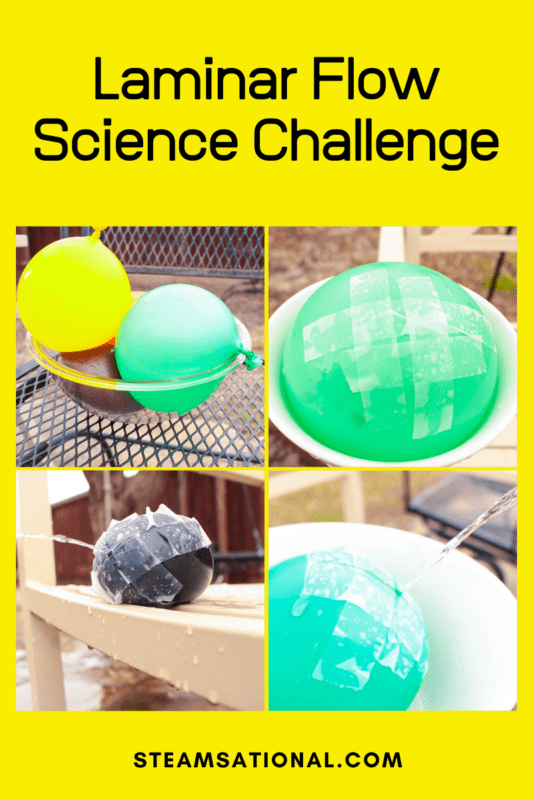
You can do this experiment easily at home (or in the classroom) using basic supplies. You’ll need a balloon, a container or bowl to stabilize the balloon, tape, and a pin.
Scotch Heavy Duty Shipping Packaging Tape, 1.88 Inches x 800 Inches, 1.5Duck Brand 241791 Printed Duct Tape, 1.88 Inches x 10 Yards, Mermaid
Kissitty 1 Box 6-Size 22mm 28mm 32mm 38mm 45mm 55mm Safety Pins Sets Pack of 220-Count for Home Office Use Art Craft Sewing Jewelry Making
Standard Color Balloon Assortment – 9
Laminar Flow Balloon Explanation
Here’s how the balloon lamiar flow experiment works. Balloons have soft edges. When you prick a balloon, the opening is typically even.
This means that when you stabalize the opening with tape, the water can flow out gently without disruption. This makes the water particles flow evenly and gently past one another, creating the illusion of frozen water.
Laminar Flow Balloon Tutorial
Follow along with these directions to do your own version of the laminar flow experiment.
It will probably take you a few tries to get right, but if you keep at it, you will be able to do the experiment as well. It took us about 5 tries before we got it to work.
Tips for Getting Your Laminar Flow Experiment to Work

First of all, the kind of tape that you use is important. We first tried our experiment with washi tape, but that failed. The tape you use must be able to hold the streched balloon in place as the water emerges. If the balloon is allowed to collapse like it would without the tape, it will fail.
Use regular scotch tape or duct tape and your experiment will work a lot better.
Next, you’ll want to stabilize your balloon. We put ours in a bowl and it worked fine. If you let the balloon flop everywhere as you do the experiment, it won’t work as smoothly.
Lastly, keep trying until it works. This is a trial and error project, so don’t get discouraged if it doesn’t work right away.
Doing the Laminar Flow Science Experiment with a Balloon
Here is the step by step tutorial for completing the balloon laminar flow experiment.
First, fill up your balloons with water. Fill up about half a dozen to about half capacity. This is so that they don’t pop just from the pressure of the water.
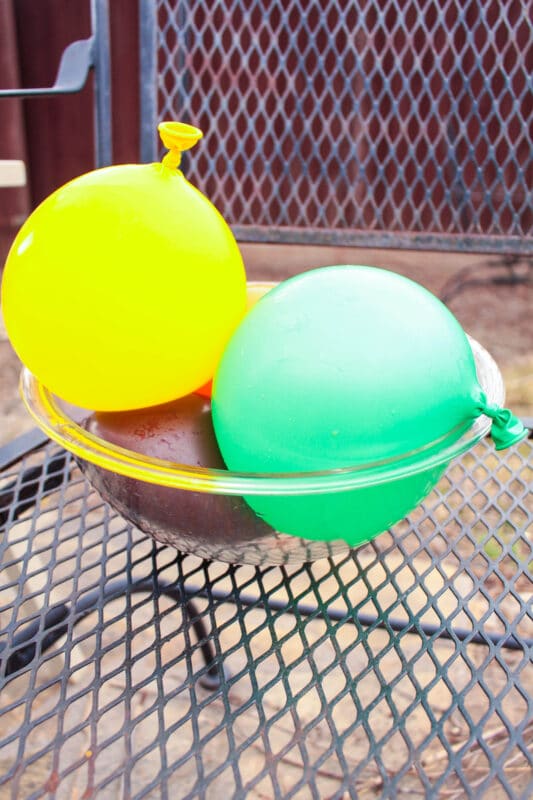
Next, dry the balloons so your tape sticks better. Move your balloons outside.
Gather a pin, a bowl, and your duct tape or scotch tape.
Make a hashtag pattern on the balloon with your tape. Leave the center opening pretty small (about 1/2 an inch or less). This will make the flow better than a larger opening.
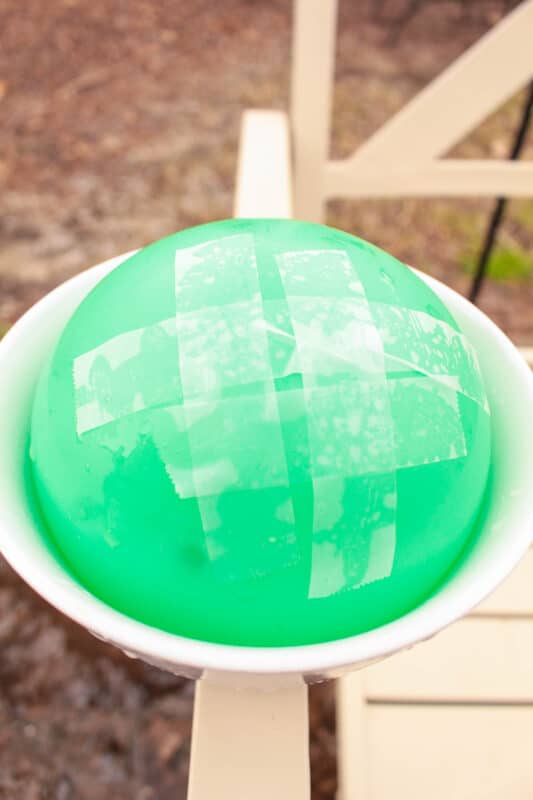
Place the balloon in your bowl or container and prick it with the pin.
The water should start to flow out evenly. If it doesn’t, there could be a few things wrong:
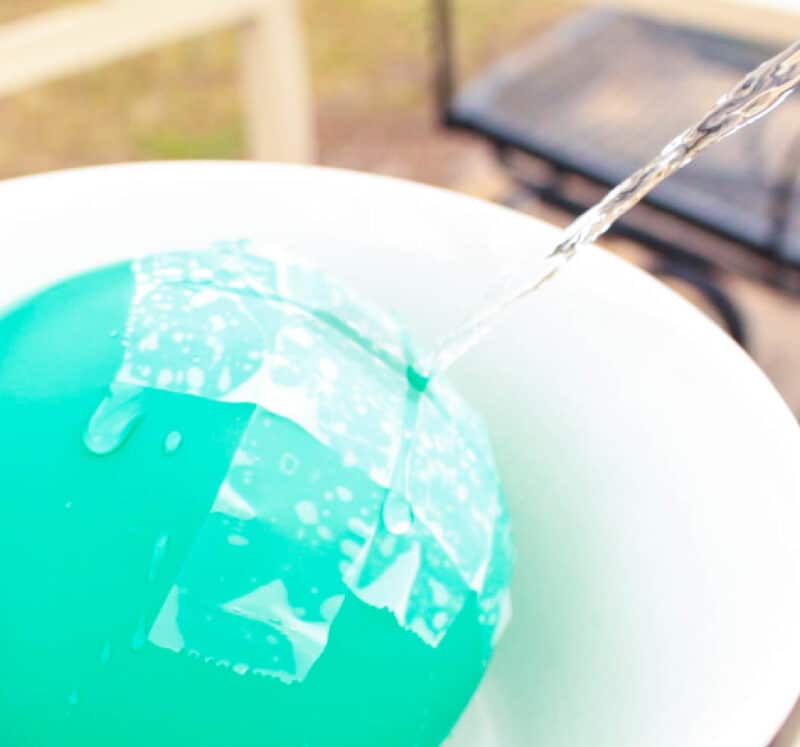
The flow is wobbly: This could mean that your hole is too small. Try pricking your next balloon with a slightly larger pin or sticking it in for longer.
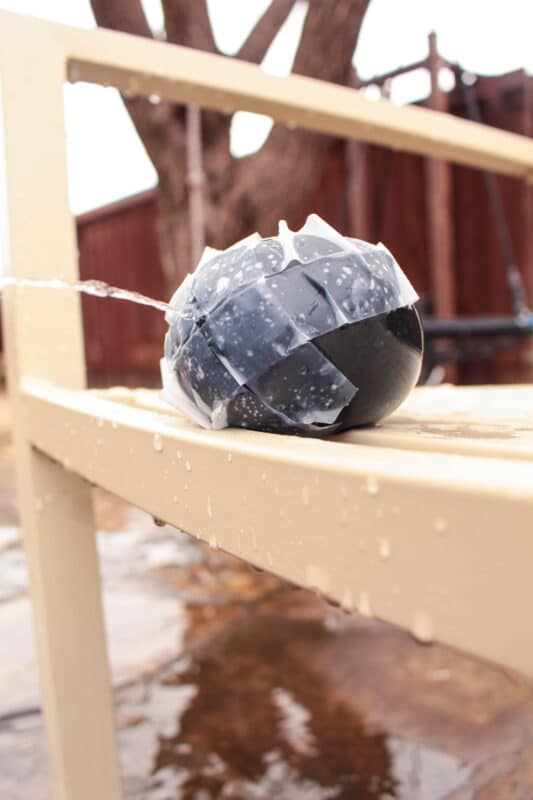
The balloon explodes: You probably need a sharper pin.
The balloon empties too fast: You need a smaller opening.
Keep trying until it works! There is no actual magic involved in this, just fluid dynamic science!
More Science Experiments for Middle School
Next Generation Science Standards for Middle School
Iodine and Vitamin C Experiment (magic disappearing color experiment!)





